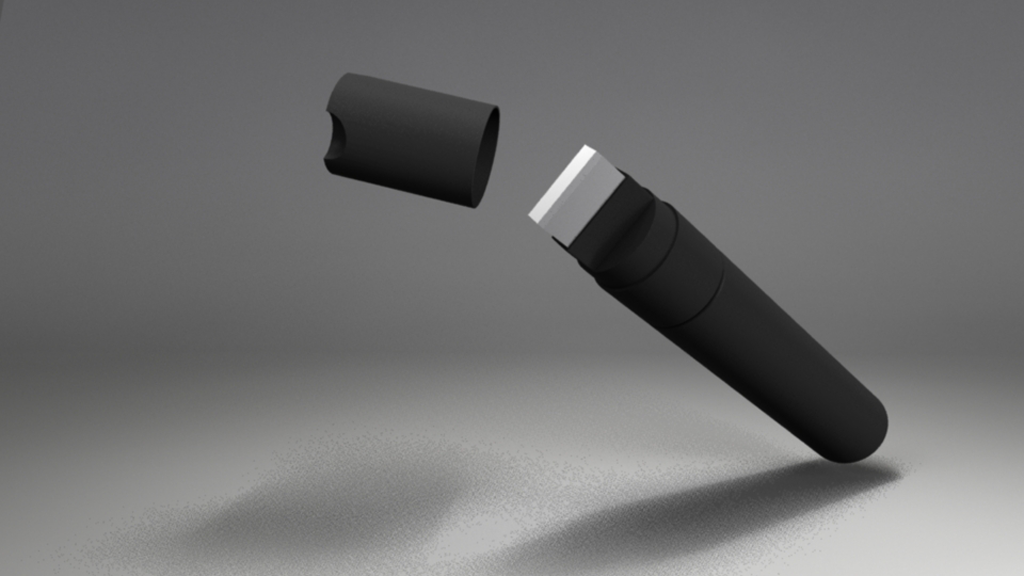As 3D printing hardware gets more and more sophisticated, and constantly modified to accommodate  the needs of its users, there’s one problem that just sticks around. This is the “first layer” problem whereby it is difficult to remove your print from its build plate without warping due to the persistent issue of sticking. This is one of the most common problems in Fused Filament Fabrication (FFF) 3D printing. Airwolf 3D’s Wolfbite was a recently released adhesive designed to address this problem. And now there’s another product out there as well from a recently funded Maltese startup: MAGIGOO.
the needs of its users, there’s one problem that just sticks around. This is the “first layer” problem whereby it is difficult to remove your print from its build plate without warping due to the persistent issue of sticking. This is one of the most common problems in Fused Filament Fabrication (FFF) 3D printing. Airwolf 3D’s Wolfbite was a recently released adhesive designed to address this problem. And now there’s another product out there as well from a recently funded Maltese startup: MAGIGOO.
 MAGIGOO is the brainchild of Maltese startup, Thought3D, which recently won funds from the Takeoff Seed Fund Award (TOSFA) to develop and market the product across Europe. One of five startups to be awarded money from TOFSA, Thought3D offers 3D scanning, modeling and casting services — and they have also developed this adhesive. Clearly they are on the right track because there is certainly a demand out there for more products that address the pervasive problem of sticking. MAGIGOO is designed to have the maximum adhesive temperature for both ABS and PLA filaments.
MAGIGOO is the brainchild of Maltese startup, Thought3D, which recently won funds from the Takeoff Seed Fund Award (TOSFA) to develop and market the product across Europe. One of five startups to be awarded money from TOFSA, Thought3D offers 3D scanning, modeling and casting services — and they have also developed this adhesive. Clearly they are on the right track because there is certainly a demand out there for more products that address the pervasive problem of sticking. MAGIGOO is designed to have the maximum adhesive temperature for both ABS and PLA filaments.
MAGIGOO comes in an applicator that looks like a black marker, and it should be thoroughly applied and allowed to dry before printing. The even better news is that the adhesive is made from environmentally friendly materials, and all you have to do is use a cloth dampened with water to clean your build plate after each print to avoid any sort of build-up. How easy is that?
and allowed to dry before printing. The even better news is that the adhesive is made from environmentally friendly materials, and all you have to do is use a cloth dampened with water to clean your build plate after each print to avoid any sort of build-up. How easy is that?
Founders ofThought3D, Keith Azzopardi and Edwarg Borg, summarize their product’s goal:
“MAGIGOO has been developed to help get the first layer of your 3D print to stick by exhibiting strong adhesive properties under 3D printing conditions. It then releases with minimal effort once the print is complete and cools down. This allows even very delicate items to be printed first go, as the removal process is totally effortless.”
Effortless sounds like a good thing after so many disaster stories of removing prints. If you are patient and allow you print to cool down properly you will witness MAGIGOO work its magic. In fact, both ABS and PLA prints will release a ‘crackling’ sound as cool down occurs, according to the Thought3D website. You will be able to hear your MAGIGOO working to secure an easy release of your print.
MAGIGOO is available in packs of 8 x 50ml bottles, that will last for over 800 prints, costing €104. Head to the Thought3D website to find out more about this new magical substance that could make 3D printing devotees’ lives much easier.
Let us know if you’ve tried this product out and what your thoughts were in the MAGIGOO forum thread on 3DPB.com.
Subscribe to Our Email Newsletter
Stay up-to-date on all the latest news from the 3D printing industry and receive information and offers from third party vendors.
You May Also Like
3D Printing Unpeeled: Orbex Investment, IndoMIM and HP, Ultrasonic Waves
INDO-MIM has bought three HP Metal Jet S100 printers, operating two in India and one in Texas. This is a win for HP because the company has deep experience in...
3D Printing News Briefs, April 3, 2024: Kickstarter FDM 3D Printer, Artificial Eyes, & More
In 3D Printing News Briefs today, we’re talking about an FDM 3D printer on Kickstarter, advancements in artificial eye creation, and 3D printed solenoids for electromagnets. Then we’ll move on...
Firestorm Gets $12.5M from Lockheed and Others to Automate Drone Production with 3D Printing
Firestorm Labs is advancing an initiative that has been a topic of discussion on our site for a while: automating drone swarm production. Drones are increasingly altering the landscape of...
3D Printing Leaders Team with Rivelin for Robotic Metals Post-processing
UK-based Rivelin Robotics is working on creating a manufacturing cell to automate the post-processing of metal 3D printed parts. If successful, this approach could reduce the costs of metal 3D...































